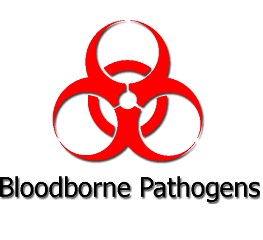 Exposures to blood and other body fluids occur across a wide variety of occupations. Health care workers, emergency response and public safety personnel, and other workers can be exposed to blood through needlestick and other sharps injuries, mucous membrane, and skin exposures. The pathogens of primary concern are the human immunodeficiency virus (HIV), hepatitis B virus (HBV), and hepatitis C virus (HCV). Workers and employers are urged to take advantage of available engineering controls and work practices to prevent exposure to blood and other body fluids.
Exposures to blood and other body fluids occur across a wide variety of occupations. Health care workers, emergency response and public safety personnel, and other workers can be exposed to blood through needlestick and other sharps injuries, mucous membrane, and skin exposures. The pathogens of primary concern are the human immunodeficiency virus (HIV), hepatitis B virus (HBV), and hepatitis C virus (HCV). Workers and employers are urged to take advantage of available engineering controls and work practices to prevent exposure to blood and other body fluids.
Tag: bloodborne pathogens
What are Bloodborne Pathogens?
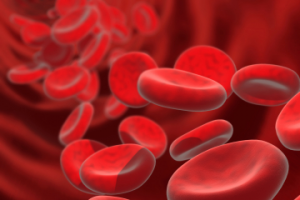 Bloodborne pathogens are infectious microorganisms in human blood that can cause disease in humans. These pathogens include, but are not limited to, hepatitis B (HBV), hepatitis C (HCV) and human immunodeficiency virus (HIV). Needlesticks and other sharps-related injuries may expose workers to bloodborne pathogens. Workers in many occupations, including first aid team members, housekeeping personnel in some industries, nurses and other healthcare personnel may be at risk of exposure to bloodborne pathogens.
Bloodborne pathogens are infectious microorganisms in human blood that can cause disease in humans. These pathogens include, but are not limited to, hepatitis B (HBV), hepatitis C (HCV) and human immunodeficiency virus (HIV). Needlesticks and other sharps-related injuries may expose workers to bloodborne pathogens. Workers in many occupations, including first aid team members, housekeeping personnel in some industries, nurses and other healthcare personnel may be at risk of exposure to bloodborne pathogens.
via Safety and Health Topics | Bloodborne Pathogens and Needlestick Prevention.
OSHA’s Bloodborne Pathogens Standard
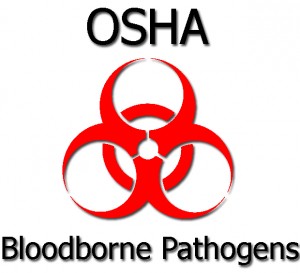 OSHA’s bloodborne pathogens standard, 29 CFR 1910.1030 applies to all persons who may reasonably anticipate contact with blood or other potentially infectious materials in the course of their employment. This includes contact with skin, eyes, mucous membranes or contact from piercing the skin. The focus of the regulation is the creation of a written exposure control plan that describes how the employer will protect employees from exposure.
OSHA’s bloodborne pathogens standard, 29 CFR 1910.1030 applies to all persons who may reasonably anticipate contact with blood or other potentially infectious materials in the course of their employment. This includes contact with skin, eyes, mucous membranes or contact from piercing the skin. The focus of the regulation is the creation of a written exposure control plan that describes how the employer will protect employees from exposure.
Bloodborne Pathogens and Needlestick Prevention
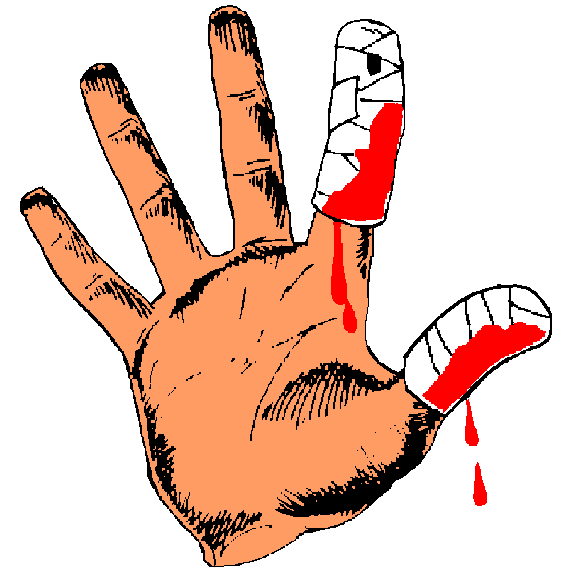 What are bloodborne pathogens?
What are bloodborne pathogens?
Bloodborne pathogens are infectious microorganisms in human blood that can cause disease in humans. These pathogens include, but are not limited to, hepatitis B (HBV), hepatitis C (HCV) and human immunodeficiency virus (HIV). Needlesticks and other sharps-related injuries may expose workers to bloodborne pathogens. Workers in many occupations, including first aid team members, housekeeping personnel in some industries, nurses and other healthcare personnel may be at risk of exposure to bloodborne pathogens.
via Safety and Health Topics | Bloodborne Pathogens and Needlestick Prevention.
Bloodborne Infectious Diseases – Emergency Needlestick Information
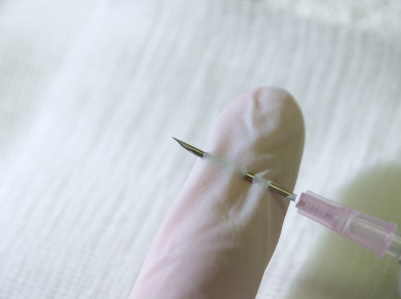 If you experienced a needlestick or sharps injury or were exposed to the blood or other body fluid of a patient during the course of your work, immediately follow these steps:
If you experienced a needlestick or sharps injury or were exposed to the blood or other body fluid of a patient during the course of your work, immediately follow these steps:
- Wash needlesticks and cuts with soap and water
- Flush splashes to the nose, mouth, or skin with water
- Irrigate eyes with clean water, saline, or sterile irrigants
- Report the incident to your supervisor
- Immediately seek medical treatment
Avoid Exposure to Bloodborne Infectious Diseases
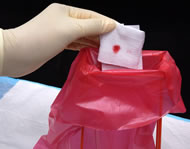 Exposures to blood and other body fluids occur across a wide variety of occupations. Health care workers, emergency response and public safety personnel, and other workers can be exposed to blood through needlestick and other sharps injuries, mucous membrane, and skin exposures. The pathogens of primary concern are the human immunodeficiency virus HIV, hepatitis B virus HBV, and hepatitis C virus HCV. Workers and employers are urged to take advantage of available engineering controls and work practices to prevent exposure to blood and other body fluids.
Exposures to blood and other body fluids occur across a wide variety of occupations. Health care workers, emergency response and public safety personnel, and other workers can be exposed to blood through needlestick and other sharps injuries, mucous membrane, and skin exposures. The pathogens of primary concern are the human immunodeficiency virus HIV, hepatitis B virus HBV, and hepatitis C virus HCV. Workers and employers are urged to take advantage of available engineering controls and work practices to prevent exposure to blood and other body fluids.
